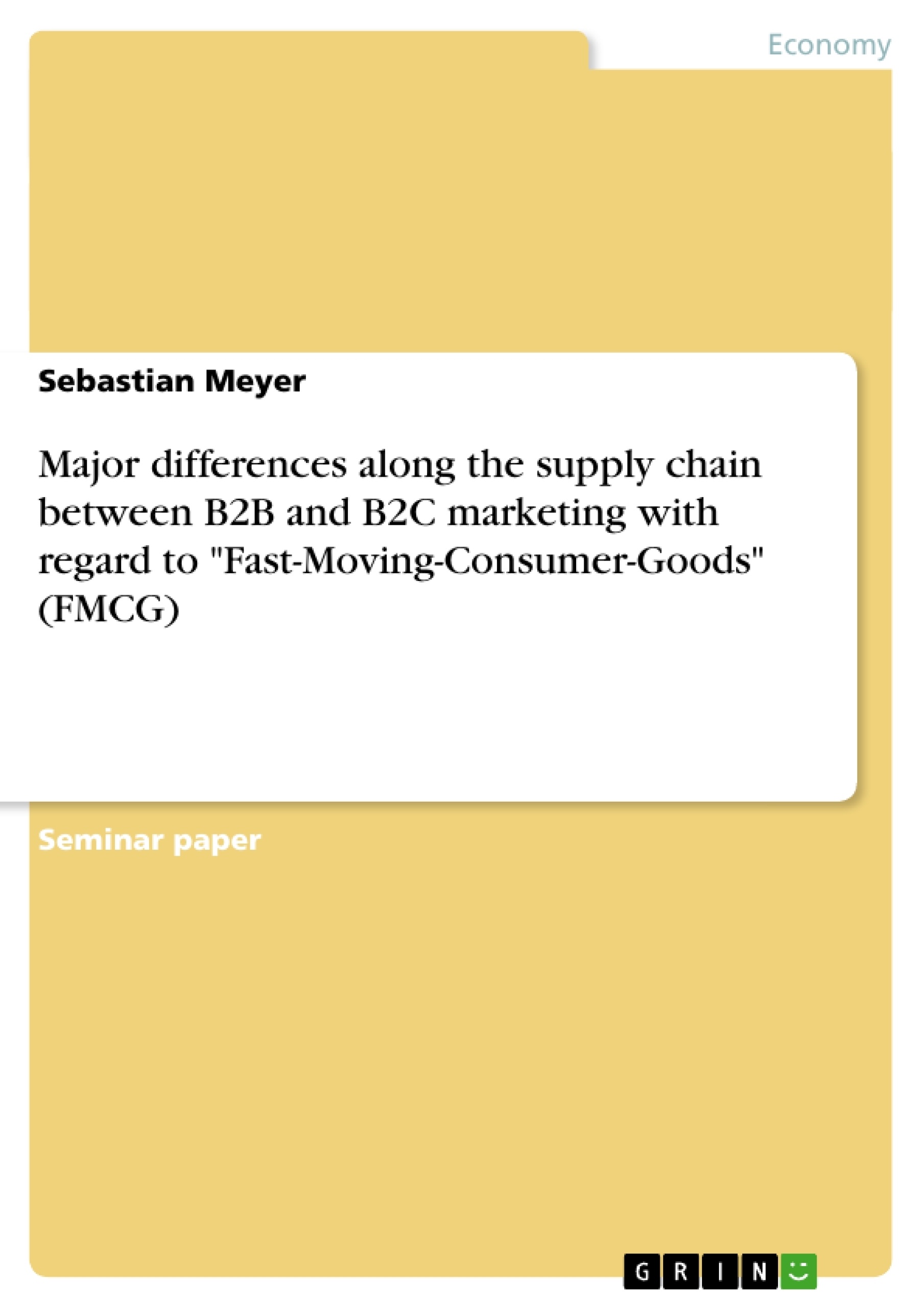It is the objective of the present assignment to identify, to analyse and to evaluate the major differences along the supply chain between business-to-business (B2B) and business-to-consumer (B2C) marketing. In particular, organisations which are involved in the manufacture and retailing of fast moving consumer goods (FMCG) should be examined
Inhaltsverzeichnis (Table of Contents)
- Introduction
- Explanation of the term ‘Fast-Moving-Consumer-Goods’
- B2B and B2C with regard to the Supply Chain
- B2B versus B2C marketing
- Marketing Mix
- Product
- Price
- Price and Product
- Price and Distribution
- Price and Promotion
- Place
- Promotion
- Customer and Markets
- Competition
- Conclusion
Zielsetzung und Themenschwerpunkte (Objectives and Key Themes)
This assignment examines the major differences along the supply chain between business-to-business (B2B) and business-to-consumer (B2C) marketing, with a particular focus on organizations involved in the manufacture and retailing of fast moving consumer goods (FMCG). The key themes explored in this assignment include:- The characteristics and nature of fast-moving consumer goods (FMCG)
- The distinctions between B2B and B2C marketing within the supply chain
- The application of the marketing mix (product, price, place, promotion) in both B2B and B2C contexts
- The differences in customer and market dynamics between B2B and B2C
- The competitive landscape in both B2B and B2C sectors
Zusammenfassung der Kapitel (Chapter Summaries)
- Introduction: This chapter defines the term "fast-moving-consumer-goods" and provides an overview of the supply chain, highlighting the differences between B2B and B2C marketing within its stages.
- B2B versus B2C marketing: This section outlines the key differences between B2B and B2C marketing, emphasizing distinctions in advertising approaches, buying decisions, and market dynamics.
- Marketing Mix: This chapter examines the four Ps of marketing (product, price, place, and promotion) and their application in both B2B and B2C contexts. It explores how these elements differ in their implementation across the two market types.
- Customer and Markets: This chapter delves into the characteristics and behavior of customers in both B2B and B2C markets, highlighting the unique dynamics and challenges specific to each.
- Competition: This chapter explores the competitive landscape in both B2B and B2C sectors, focusing on the strategies and challenges companies face in these distinct markets.
Schlüsselwörter (Keywords)
The primary focus of this assignment is on B2B and B2C marketing within the FMCG sector. Key terms and concepts explored include fast-moving-consumer-goods, supply chain, marketing mix, product, price, place, promotion, customer dynamics, competitive landscape, and the AIDA model. The study utilizes a comparative approach to analyze the distinctions and complexities of these two market types.
Ende der Leseprobe aus 16 Seiten
- nach oben
- Arbeit zitieren
- B.A. Sebastian Meyer (Autor:in), 2004, Major differences along the supply chain between B2B and B2C marketing with regard to "Fast-Moving-Consumer-Goods" (FMCG), München, GRIN Verlag, https://www.grin.com/document/75506
Blick ins Buch



